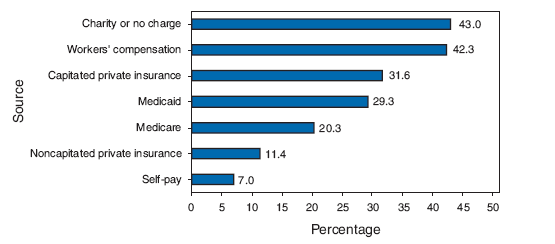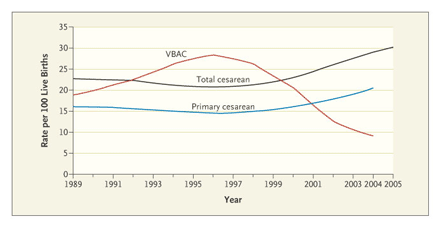Skim for OS X
A new application called Skim has been released for Mac OS X and I mention it here for readers who stuff their hard disks with pdf files of articles they have heretofore been unable to annotate electronically:
[Michael McCracken]
A new application called Skim has been released for Mac OS X and I mention it here for readers who stuff their hard disks with pdf files of articles they have heretofore been unable to annotate electronically:
[Michael McCracken]
The New York Times has an article titled Some Hospitals Call 911 to Save Their Patients which details two cases of patients having surgery at a specialty surgical hospital, experiencing complications, and then being transferred to a medical center (where they ultimately died). The whole article is written, and certainly the title was chosen, to suggest that 911 emergency services were called in order to treat a deteriorating patient as no physicians routinely stay in-house overnight.
Although I am not familiar with the particulars of the two cases mentioned in the New York Times article, it should be known that 911 would be called for any intra-facility transfer and does not necessarily imply they were called to render care in an emergency or that care was unavailable from other professionals already there.
Isn't it interesting, though, that a patient who is has no objection to getting their care from a CRNA, nurse practitioner, physician's assistant, or other 'health care provider' (after all, it's cheaper, right?) suddenly deems it essential to have a doctor there when things start to go south? Of course they do. I would, too!
If you're flying a commercial flight and the landing gear won't deploy, you feel better knowing the pilot is a former military pilot with years of experience in 'heavies.' If your child's safety is threatened by a stranger, you feel better knowing that highly trained and qualified officers are there to protect you. If you're having surgery and things start to go bad, you want an anesthesiologist, a physician, a smart, independent thinker who doesn't get flustered or do whatever the surgeon says to do. You want me. Not someone who is cheaper, less highly trained, less experienced, someone who will do in 99% of cases.
New Data, More Doubts About Pay-for-Performance (P4P)
This nicely sums up my suspicions about P4P beyond just the fact that it rewards task completion over the exercise of medical judgement...
[Health Care Renewal]
Wikipedia
Professor Arthur Herman
Charles Krauthammer: The wars against radical Islamic insurgents
The CDC just published their Summary of Notifiable Diseases --- United States, 2005
I wonder why C. diff enterocolitis isn't on the list? I've seen this illness cause more morbidity and mortality in the United States than the big long list they do track...

Pacific Research Institute:
JACKPOT JUSTICE: The True Cost of America's Tort System
Processing....
Percentage of Office-Based Primary-Care Physicians Who Did Not Accept New Patients, by Expected Payment Source --- National Ambulatory Medical Care Survey, United States, 2003--2004

Recommendations of the Advisory Committee on Immunization Practices (ACIP)
I love barbecued ribs. I never tried to make them at home because I thought it must be too time intensive. Barbecued ribs have to be made on a barbecue, right? Wrong. Barbecued ribs can be made in a crock pot. I think these ribs are as good if not better than any you'll find in a restaurant (even a Texas barbecue restaurant). I'm posting it here because I've promised several nurses I'd bring in the recipe, always forget, so now I can just point them here.
Ingredients:
1. Remove inner skin from ribs (I use pliers to make this easier). Mix brown sugar, pepper, liquid smoke, garlic, and salt. Rub mixture onto ribs and cut them into 4 inch pieces. Layer ribs and onion in crock pot.
2. Cover and cook on low setting for 6-9 hours (depending on how your crock pot interprets 'low').
3. Remove ribs from pot. Drain and discard liquid.
4. Dip ribs into barbecue sauce, place ribs back into crock pot and pour any remaining sauce over ribs. Cook on low for an additional hour.
This recipe makes enough for 2-4 adults, depending on their appetite. For our family of 4, I make a double recipe (7 lbs of ribs) so there are sure to leftovers. I have tried this recipe with spare ribs instead of baby-back ribs and found it much too greasy for my liking.
I have cable modem service to my home via Comcast. I bought my own modem, the Motorola 4100, about three years ago so I wouldn't have to pay the cable modem rental fees. Since the modem only cost about $50, I've saved about one hundred dollars over that time period.
I had Comcast come install two CableCards in my new Tivo Series 3 and the installers commented on what an old modem I had. They went on to explain that one advantage of renting a modem is that, when the modem limits download speed, Comcast will replace it with a faster one. Having just installed a new Airport Extreme Pre-N wireless router, this seemed like something to check out.
After reading the spec. sheets on both modems it looks to me like their download speed is the same (38 Mbps). However, the Motorola 5101 I just installed is faster in my tests. Maybe it's the DOCSIS 2.0 support. Well, I'm just an unfrozen caveman anesthesiologist but I know speed when I see it...16 Mbps:

If you bought your own modem several years ago, consider upgrading it. The results might surprise you.
Download of the Day: Gmail Manager (Firefox) - Lifehacker
A must-have for a Firefox Gmail user
well, in Germany anyway...

As an anesthesiologist I provide anesthesia for cesarean sections quite often. In fact, when I'm on overnight call it's what I spend most of my time doing. Usually, anesthesia for c-section consists of a spinal anesthetic, or using a pre-existing epidural catheter, or (more rarely and usually only in emergencies) a general anesthetic. I am therefore quite interested in the subject of cesarean section rates and what effects how often they are done. I learned some things from this article [free full text]:
Cesarean Delivery and The Risk-Benefit Calculus
1. Parturients are different--they are heavier and older.
2. The number of premature and low birth-weight babies has grown.
3. Vaginal breech deliveries are no longer recommended.
4. Operative deliveries (forceps or vacuum) are less common due to better data describing their risks.
5. More labors are induced (20% in 2003 vs 9.5% in 1990) and induced labors are more likely to result in C-section.
6. Changes in provider behavior
Look at John Edwards' list of law cases (thank you, Google). Notice the medical malpractice cases:
|
MEDICAL MALPRACTICE CASES Another specialty Edwards developed was in medical malpractice cases involving problems during births of babies. According to the New York Times, after Edwards won a $6.5M verdict for a baby born with cerbral-palsy, he filed at least 20 similar lawsuits against doctors and hospitals in deliveries gone wrong, winning verdicts and settlements of more than $60M. |
||||
| Case | Summary of Facts | Case Type | Result | |
| Griffin v. Teague, et al. (Mecklenburg Co. Superior Ct., NC, 1997) |
Application of abdominal pressure and delay in performing c-section caused brain damage to infant and resulted in child having cerebral palsy and spastic quadriplegia. Verdict set record for malpractice award. | Medical Malpractice | $23.25M verdict |
|
|
Campbell v. Pitt County Memorial Hosp. (Pitt County, NC, 1985) |
Infant born with cerebral palsy after breech birth via vaginal delivery, rather than cesarean. Established North Carolina precedent of physician and hospital liability for failing to determine if patient understood risks of particular procedure. | Medical Malpractice |
$5.75M settlement |
|
| Wiggs v. Glover, et al. | Plaintiff alleged infant's severe cerebral palsy was caused by negligent administration of pitocin, failure to use fetal monitor, or timely intervening in baby's fetal distress. | Medical Malpractice |
2.5M settlement |
|
| Cooper v. Craven Regional Med. Ctr., et al. | Infant suffered severe brain damage after obstetrician failed to moderate use of Picotin after baby displayed clear fetal distress. | Medical Malpractice |
$2.5M settlement |
|
| Dixon v. Pitt County Memorial Hospital (Pitt County, NC) |
Birth-related injuries including cerebral palsy and mental retardation allegedly caused by obstetrician's failure to diagnose fetal distress, including umbilical cord wrapped around baby's neck prior to delivery. | Medical Malpractice |
2.4M settlement |
|
Despite the increase in c-section rates nationwide, we have seen no reduction in the cerebral palsy rate...
The abstract is here.
[AHRQ]
The Tesla Motors Blog, this entry by marketing chief Darryl Siry, sums up their business plan:
Excellent Lee Fleisher article in American Family Physician [free full text] for any primary care physician who is asked to do pre-op medical evaluations (note I didn't use the word 'clearance').
It's official (pdf). The Center for Medicare and Medicaid plans on cutting the physician fee schedule 9.9 percent as of January 2008. Five percent for 2007 (which cut was postponed due to a temporary one year patch), and 4.9% for 2008.
![]()